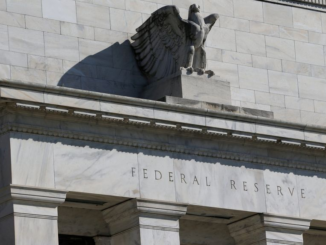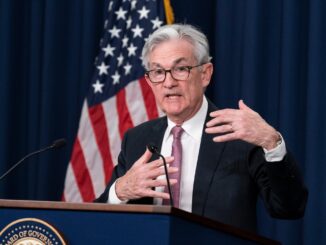
It’s premature to think rate cuts are right around the corner, we haven’t decided anything yet, it’s meeting by meeting, but in March no way Jose, I mean, that’s not my base case.
By Wolf Richter for WOLF STREET.
Powell’s press conferences that follow the FOMC meetings are somewhere between a hoot and a mess, because the reporters are trying by hook or crook, with often inane questions and speculative scenarios, to get Powell to say something that, when read in between the lines, could be twisted into “Powell was dovish,” which has been standard operating procedure for the past 18 months.
So, while we wait for the “Powell was dovish” commentary to come out of the woodwork, I have created a cocktail that consists of quotes of what Powell said, and summaries of what he said, at today’s post-meeting press conference concerning inflation and rate cuts, all mixed together, stirred, not shaken, and served with a smile.
Here’s the Powell cocktail, not quite in his own words:
We’ve jacked up our policy rates by 525 basis points over the past two years and moved it well into restrictive territory, and we’ve done nearly $1.3 trillion in QT, we’ve significantly tightened monetary policy, and we have been seeing the effects on inflation.
Inflation has eased over the past six months, and that’s very good, so I’d say our policy rate is likely at its peak for this tightening cycle, but we will need to see continuing evidence to build confidence that inflation is moving down sustainably toward our goal before we cut rates.
But this cooling inflation could be a head fake, the decline in prices of durable goods might not last, and rent inflation might not play along with it, and other services might not play along with it, so we’re not rushing to cut rates, we’re going to watch this carefully.
The economy is good, it has expanded faster in 2023 than we expected despite the tightened policy. And the labor market is rebalancing well, it’s still tight, and the pay increases are still strong, but it’s not out of whack like it was.
We’re not trying to slow the economy, but we need to make sure that inflation actually stays on track to 2% core PCE, and we need to make sure that we don’t fall for a head fake. We want to take advantage of this situation and finish the job on inflation while keeping the labor market strong.
So you ask, a rate cut in March? It’s premature to think rate cuts are right around the corner, we haven’t decided anything yet, it’s meeting by meeting, but no way Jose, I mean, that’s not my base case.
That’s why we included that rate-cut mania push-back language in the statement, to signal clearly that, with strong growth, strong labor market, inflation coming down, the committee intends to move carefully as we consider when to dial back the restrictive stance.
We will be data-dependent as we approach that question of when to begin to dial back restrictions. We will be looking at this meeting by meeting. But based on the meeting today, I would tell you that I don’t think it’s likely that we’ll reach a level of confidence by the time of the March meeting to identify March as the time to cut rates.
But that doesn’t mean we wait around to see the economy tank, because it’ll be too late. We are really in risk-management mode – of managing the risk that we move too soon or move too late.
So there is a risk that inflation will re-accelerate. When we look back, what will we see? Will inflation have dipped then come back up? Are the last six months flattered by factors that won’t repeat themselves?
Of course, if inflation were to surprise by moving back up, we would have to respond, and that would be a surprise at this point, but that’s why we are keeping our options open here, and why we are not rushing.
But I think the greater risk is that inflation will stabilize at a level meaningfully above 2%. That is more likely to me.
Both of those are risks, but I think the more likely risk is that inflation will stabilize at a level meaningfully above 2%.
If we see inflation being stickier, or higher, or those sorts of things, we would argue for cutting rates later.
If we see an unexpected weakening in the labor market that would certainly weigh on cutting sooner.
So you ask, what good reason is there to keep policy rates above 5%? As you know, almost every participant on the Committee believes it will be appropriate to reduce rates. We feel like inflation is coming down. What we are trying to do is identify a place where we’re really confident about inflation getting back down to 2% so we can then begin the process of dialing back the restrictive level.
The median participant wrote down three rate cuts this year. But I think to get to that place where we feel comfortable starting the process, we need confirmation that inflation is in fact coming down sustainably to 2%.
So you ask, will this rate cut when it finally comes, be just a one-off? You know, that will really depend on how the economy evolves. We’ll be looking at the economic data, and we’ll make our decisions based on that. There are risks that would cause us to go slower, for example, stronger inflation. And there are risks that would cause us to go faster or sooner, for example, a weakening in the labor market or very persuasive lower inflation. So we will just be reacting to the data. That is the only way we can really do this.
Enjoy reading WOLF STREET and want to support it? You can donate. I appreciate it immensely. Click on the beer and iced-tea mug to find out how:
Would you like to be notified via email when WOLF STREET publishes a new article? Sign up here.
ENB Top News
ENB
Energy Dashboard
ENB Podcast
ENB Substack



